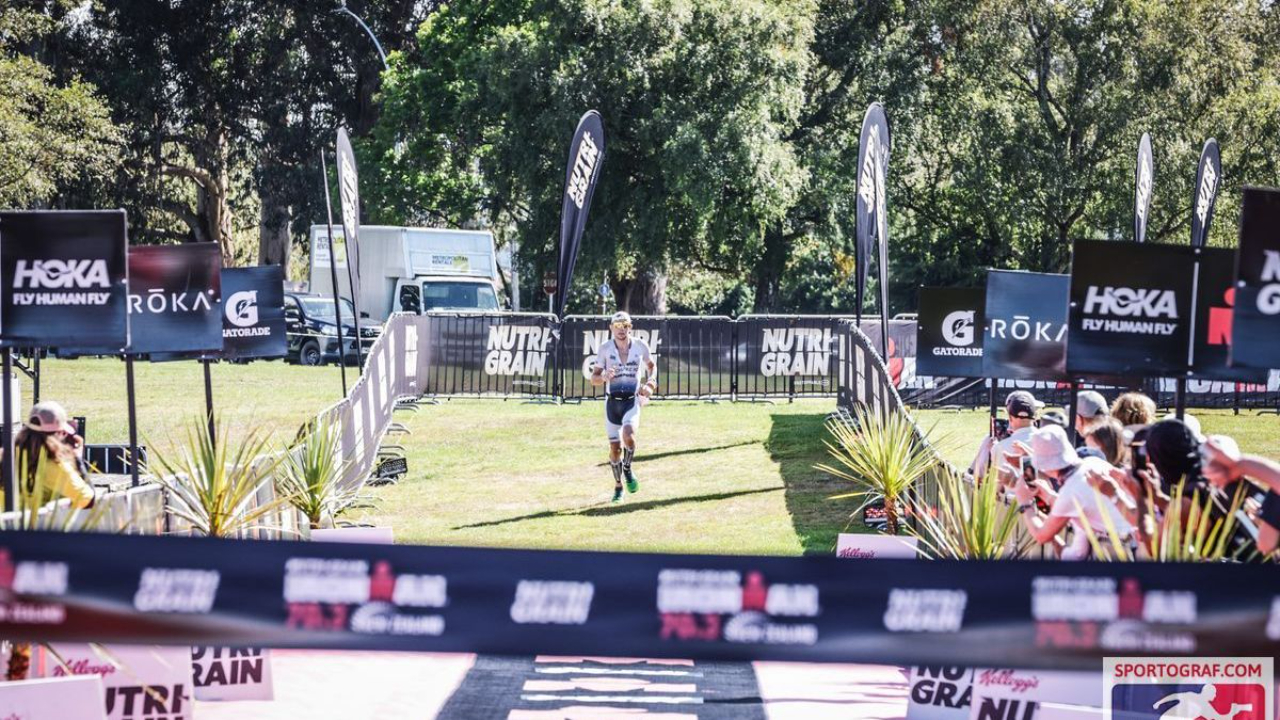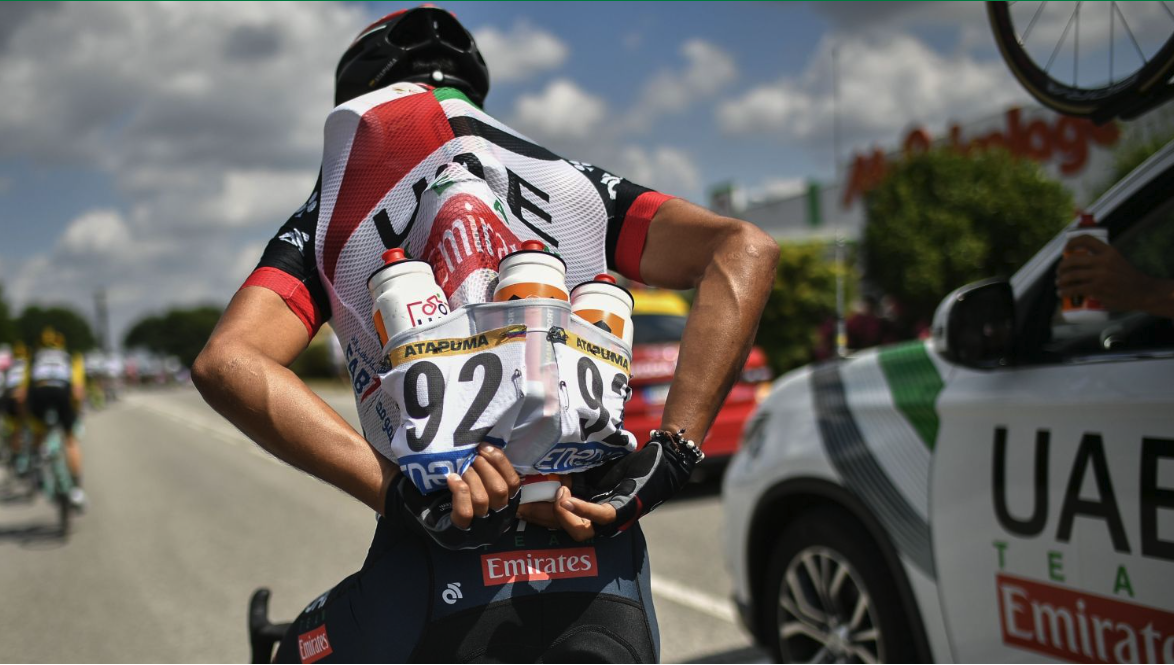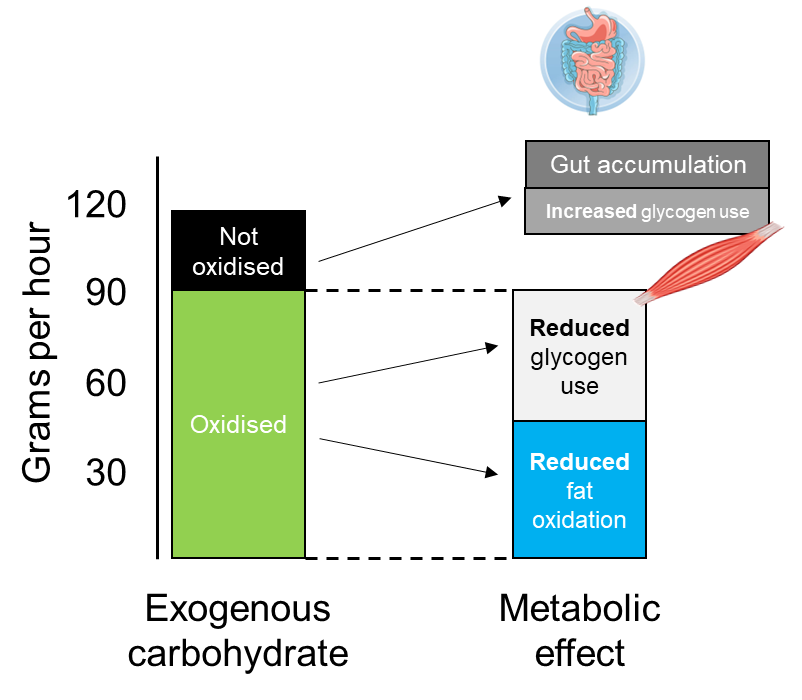120 Grams Per Hour: Deciphering the 'Carbolution' Craze - A Deep Dive into Physiology and Research


I wrote a blog about the recent research assessing the effects of ingesting carbohydrates at very high rates, >120 grams per hour, during endurance exercise (1, 2). My view of the literature, as discussed in the blog, is that there isn’t yet any compelling evidence that ingesting carbohydrates at these super high rates will improve long-distance triathlon performance, or that it’s worth the logistical hassle and risk of gastrointestinal upset. Indeed, there’s even some evidence that carbohydrate ingestion at rates above 90 grams per hour accelerates muscle glycogen depletion and impairs performance (3, 4).
In this blog, inspired by an engaging Twitter thread authored by Prof. Tim Noakes and Iñigo San Millán, I'll delve into the metabolic outcome of ingesting 120 grams of carbohydrates per hour. Through this exploration, I aim to reinforce the perspective that such elevated carbohydrate intake rates might not justify the risk for Ironman triathletes.
Peak exogenous carbohydrate oxidation rates are only ~90-100 grams per hour
So, if you’re ingesting carbohydrates at 120 grams per hour, what does your body do with all that carbohydrate? Remember, the main reason for ingesting carbohydrate during exercise is to provide a extra, exogenous fuel sources, which reduces the burden placed on our own limited stores of carbohydrate (glycogen). This allows you to power exercise with less breakdown of your glycogen fuel tank.
To be doing this, the carbohydrate you ingest during exercise needs to be oxidised. Studies therefore measure exogenous carbohydrate oxidation rates, or the rates at which the carbohydrate ingested during exercise is being utilised to support metabolism.
The two new studies show that, when ingesting carbohydrates during exercise at 120 grams per hour, you only oxidise about 75% of it (1, 2). That leaves 25%, or 30 grams per hour, unoxidised.
I should add that, even if you ‘only’ ingest carbohydrate at 90 grams per hour (that’s still a truckload of carbohydrates!), you don’t oxidise all 100% of it. Inevitably, some will go unoxidised. That said, the studies show that at 90 grams per hour the oxidation efficiency is quite a bit higher than at 120 grams per hour (~86% vs. 75%), and therefore much less carbohydrate is left unoxidised (~13 vs. 30 grams per hour) (2).
The unoxidised carbohydrates simply displace fat oxidation
When we ingest carbohydrates at rates of 90 grams per hour or lower, those carbohydrates provide a useful extra fuel source. Accordingly, there is a reduction in the amount of glycogen we need to break down to fuel the working muscles, which is great. We see a reduction in fat oxidation too, so for every kilocalorie of energy provided by exogenous carbohydrate, we see about half-a-kilocalorie of glycogen savings (5).
However, when we increase carbohydrate ingestion above 90 grams per hour, the recent research tells us that we don’t get any further glycogen savings (2). All the extra exogenous carbohydrate oxidation simply displaces fat oxidation, meaning that we are burning through our glycogen stores at the same rate whether we’re ingesting carbohydrates at 90 or 120 grams per hour. In fact, research from back in 2018 suggested that increasing carbohydrate ingestion above 90 grams per hour not only fails to preserve glycogen, but may stimulate its breakdown (3, 4). This, of course, is the precisely the opposite of what we are trying to achieve.
The extra carbohydrates probably just accumulate in the gut
Okay, so hopefully we’ve established two things so far: (i) carbohydrate ingestion at rates greater than 90 grams per hour doesn’t ease the pressure on your glycogen stores and (ii) ingesting carbohydrate at 120 grams per hour will leave ~30 grams per hour unoxidised.
So, what happens to those unoxidised carbohydrates?
There are two possibilities. One is that the unoxidised carbohydrate is directed towards glycogen synthesis, or stored in muscle and the liver for use later. That wouldn’t be so bad, as we are ingesting carbohydrate in the first place to try and preserve our glycogen stores. Particularly if we are backing up intense efforts, after intense effort, like in a Grand Tour cycling race.

However, during competitive-intensity exercise, in my view this is unlikely to happen. Glycogen storage – which first requires the uptake of the carbohydrate into cells, and then the linking of those carbohydrates into the glycogen store within cells – is an energy-consuming process (6, 7). As the body is already working hard to supply the energy required to cycle or run at your race pace, expending energy laying down new glycogen from ingested carbohydrates, rather than just oxidising those carbohydrates straight away, doesn’t seem physiologically sensible. In fact, and in a physiologically sensible fashion, it appears the enzyme responsible for glycogen synthesis is inactivated by adrenaline, which is elevated when exercise is of a reasonable intensity (7–9). For balance I’ll add that glycogen storage has been shown during exercise, although the exercise in this study was pretty mild, and likely quite a bit lower than the competition intensities we are considering here (10).
For further scientific completeness I’ll add that the calculations used to estimate exogenous carbohydrate oxidation rates during exercise assume that no glycogen storage is occurring – if there is glycogen storage going on, those calculations will overestimate exogenous carbohydrate oxidation, and therefore overestimate the contribution that the ingested carbohydrate is making to energy turnover (11).
Therefore, I don’t think the unoxidised carbohydrate with ingestion rates of 120 grams per hour results in any meaningful glycogen storage, particularly not during exercise at competitive intensities.
The second possibility, and in my view the most plausible one, is that the unoxidised carbohydrate simply accumulates in the gut. This is problematic. Excess carbohydrate in the gut can cause bloating, nausea, and any number of gastrointestinal nasties. Gastrointestinal issues are a common cause of failure to finish in Ironman triathlon, and, even if you can struggle on, really do make the race less enjoyable. If the extra carbohydrate isn’t working to preserve your precious glycogen stores anyway, what’s the point? Why take the risk?
In my experience, I've observed athletes tolerating remarkably high ingestion rates during races. However, it's crucial to note that tolerance doesn't necessarily equate to effective oxidation or confer any meaningful benefits. It's vital to discern this distinction. I'm of the belief that recent advancements in carbohydrate gel technology primarily enhance tolerance or the preservation of unoxidized carbohydrates in the gut, rather than directly translating into performance advantages via improved oxidation.
We're aware, as previously discussed in our blog (referencing Figure 1), that there are certain outlier athletes capable of oxidizing carbohydrates at a notably higher rate compared to the majority. In Figure 1 (1) from our earlier blog, we showcased oxidation rates reaching as high as 1.9 g/min, with the majority hovering around 1.6 g/min, and the lowest recorded at 1.3 g/min. This considerable variability underscores variations both within and between subjects.
Is a “carbolution” really powering the professional cycling peloton?
A recent Velo article proposed that a “carbolution” is behind the amazing recent performances we have seen in professional cycling.
The premise of the article is that higher carbohydrate intakes are driving increases in the power output of the peloton, and records on climbs and in the Classics. New formulations, or “rocket-science concoctions” like Maurten hydrogels and glucose-fructose mixtures are allowing cyclists to take on carbohydrate at rates of 120 grams per hour, or even higher, and that this is what’s behind improvements in performance.
Based on the evidence I’ve considered above, I think you might agree that this is a bit of a stretch. Sure, glucose-fructose mixtures are a useful means of allowing an athlete to increase carbohydrate ingestion rates during exercise to 90 grams per hour, but we’ve known about these drinks and their metabolic effects for ~20 years (5). We’ve also seen that there’s no need to go beyond 90 grams per hour, as doing so doesn’t further preserve glycogen (2) and in fact might accelerate its use, and worsens performance (3, 4).
As for hydrogels…as I discussed in a blog last year, they may eventually have a place in the endurance athlete’s drink bottle, given there is some evidence they are easier on the stomach than the simple carbohydrates found in traditional sports drinks (12). In that study, hydrogel consumption at 90 grams per hour gave runners a performance benefit vs. the same rate of traditional non-hydrogel carbohydrate consumption, and this was likely due to beneficial effects on gut comfort, rather than metabolism (glycogen use was the same). There isn’t any evidence for ingesting them at rates beyond 90 grams per hour, though, for all the reasons cited above – hydrogels simply aid with getting from the stomach to the intestine. After that, they’re like any other carbohydrate, and, to my eye at least, likely to have the same effects. I’m happy to revise this view if new evidence comes to light, but for now, I remain to be convinced.
Besides as mentioned above, professional cycling is a very specific world. Professional cyclists endure prolonged, intense competition day-after-day, and those competitions involve hours of easy riding featuring repeated high-intensity bursts. That mix is important here. The easiest hours in the peloton – some of which are truly very easy - may afford the opportunity for glycogen storage I’ve said we don’t see at the competitive intensities in triathlon. Therefore, the nutrition practices of elite professional cyclists have relatively little bearing on triathlon, and certainly not on recreational exercisers. I’d go as far as to say professional cycling is so specific, that it doesn’t translate to anything else.
Is there a “carbolution” that is driving professional cycling to new heights? Nailing your nutrition, sure, helps. Does going beyond 90 grams per hour during an intense competition improve performance? Hopefully the text above will allow you to make your own informed decisions.
Summary
Figure 1: The response and likely fate of large carbohydrate intakes during strenuous exercise.
So, my interpretation of the data is that ingesting carbohydrates at rates exceeding 90 grams per hour during competition is a risk not worth taking. Carbohydrate intake at rates up to 90 grams per hour reduces the rate at which we use our glycogen stores to power exercise, which is super useful during an Ironman. However, further increasing carbohydrate intake to rates of 120 grams per hour fails to further ease the burden on our glycogen stores – in fact, it may increase the burden – and simply accumulates in the gut, where it likely threatens to cause nasty gastrointestinal issues. Figure 1 summarises this above.
Thanks for reading and EndureOn 👍
References
- Hearris MA, Pugh JN, Langan-Evans C, Mann SJ, Burke L, Stellingwerff T, Gonzalez JT, Morton JP. 13C-glucose-fructose labelling reveals comparable exogenous CHO oxidation during exercise when consuming 120 g/h in fluid, gel, jelly chew or co-ingestion. J Appl Physiol 132: 1394–1406, 2022. doi: 10.1152/japplphysiol.00091.2022.
- Podlogar T, Bokal Š, Cirnski S, Wallis GA. Increased exogenous but unaltered endogenous carbohydrate oxidation with combined fructose-maltodextrin ingested at 120 g h−1 versus 90 g h−1 at different ratios. Eur J Appl Physiol 122: 2393–2401, 2022. doi: 10.1007/s00421-022-05019-w.
- King AJ, O’Hara JP, Arjomandkhah NC, Rowe J, Morrison DJ, Preston T, King RFGJ. Liver and muscle glycogen oxidation and performance with dose variation of glucose–fructose ingestion during prolonged (3 h) exercise. Eur J Appl Physiol 119: 1157–1169, 2019. doi: 10.1007/s00421-019-04106-9.
- King AJ, O’Hara JP, Morrison DJ, Preston T, King RFGJ. Carbohydrate dose influences liver and muscle glycogen oxidation and performance during prolonged exercise. Physiol Rep 6: e13555, 2018. doi: 10.14814/phy2.13555.
- Wallis GA, Rowlands DS, Shaw C, Jentjens RLPG, Jeukendrup AE. Oxidation of combined ingestion of maltodextrins and fructose during exercise. Med Sci Sports Exerc 37: 426–432, 2005. doi: 10.1249/01.MSS.0000155399.23358.82.
- Jensen TE, Richter EA. Regulation of glucose and glycogen metabolism during and after exercise. Journal of Physiology 590: 1069–76, 2012. doi: 10.1113/jphysiol.2011.224972.
- Nielsen JN, Wojtaszewski JFP. Regulation of glycogen synthase activity and phosphorylation by exercise. Proceedings of the Nutrition Society 63: 233–237, 2004. doi: 10.1079/PNS2004348.
- Jiao Y, Shashkin P, Katz A. A new glycogen synthase activity ratio in skeletal muscle: effects of exercise and insulin. Life Sci 69: 891–900, 2001.
- Chasiotis D, Sahlin K, Hultman E. Regulation of glycogenolysis in human muscle at rest and during exercise. J Appl Physiol 53: 708–715, 1982.
- Keizer HA, Kuipers H, van Kranenburg G, Geurten P. Influence of liquid and solid meals on muscle glycogen resynthesis, plasma fuel hormone response, and maximal working capacity. Int J Sports Med 8: 99–104, 1987.
- Folch N, Péronnet F, Péan M, Massicotte D, Lavoie C. Labeled CO2 production and oxidative vs nonoxidative disposal of labeled carbohydrate administered at rest. Metabolism 54: 1428–1434, 2005. doi: 10.1016/j.metabol.2005.05.006.
- Rowe JT, King RFGJ, King AJ, Morrison DJ, Preston T, Wilson OJ, O’Hara JP. Glucose and fructose hydrogel enhances running performance, exogenous carbohydrate oxidation, and gastrointestinal tolerance. Med Sci Sports Exerc 54: 129–140, 2022. doi: 10.1249/MSS.0000000000002764.
JOIN THE SQUAD
Take charge of your performance with proven training programs and workouts, adjustable to your needs, in the Endure IQ Training Squad.
LIMITED OFFER
